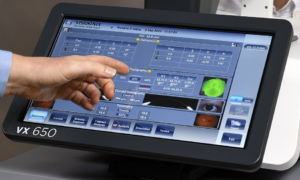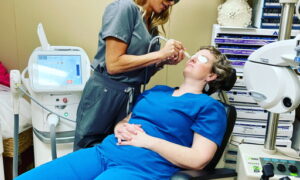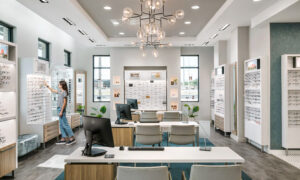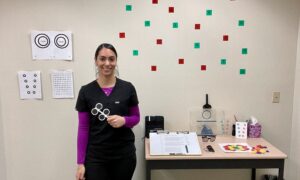By Dave Anderson, OD
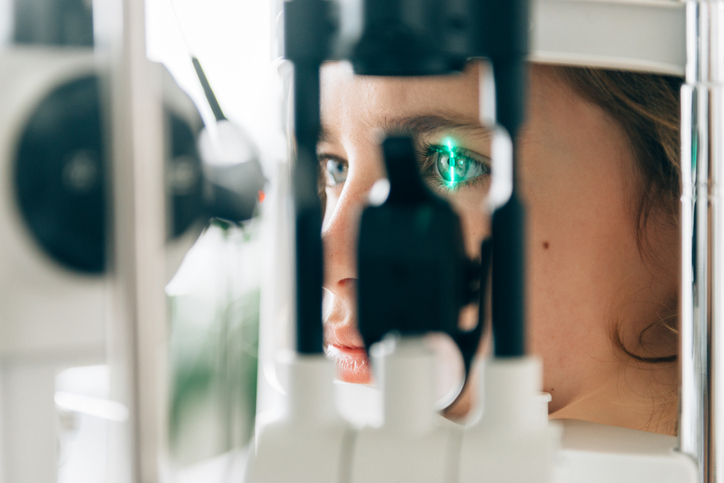
August 30, 2017
The instrumentation you invest in can improve diagnosis and care of patients–and bring significant revenues into your practice. Here are three that not only helped me be a better doctor, but increased my practice’s profitability.
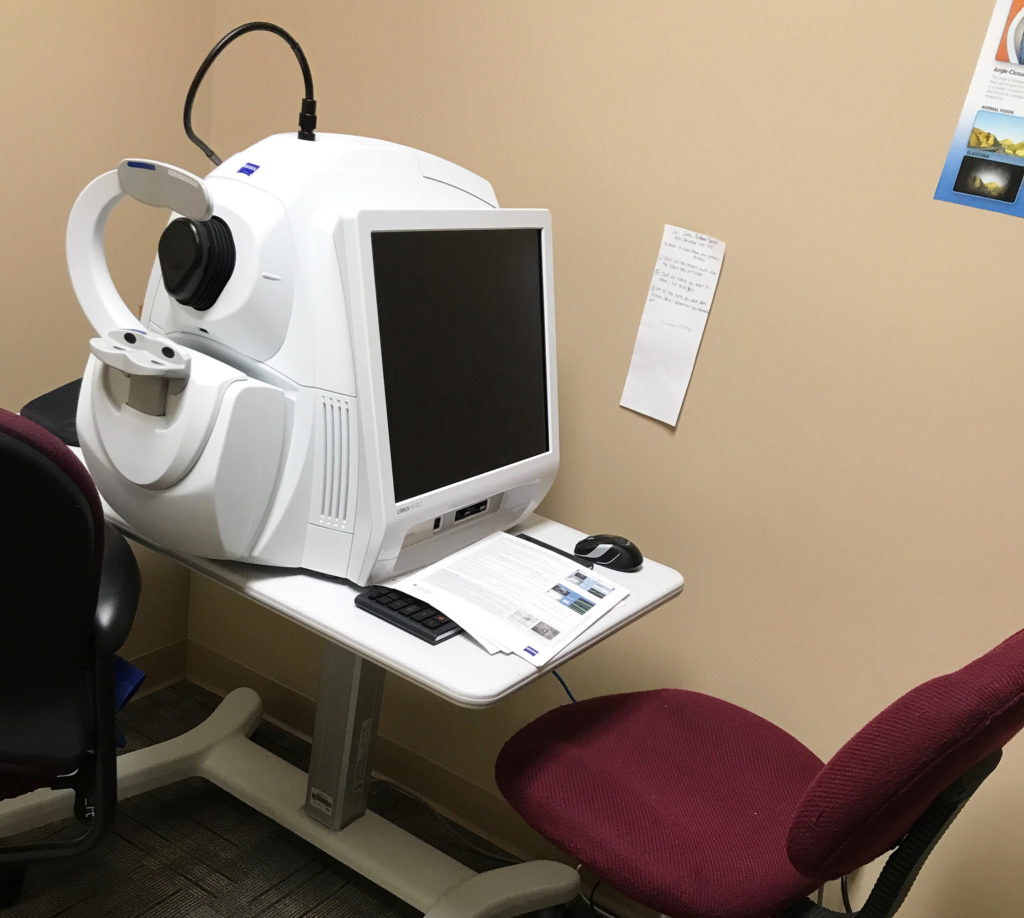
The OCT in Dr. Anderson’s office. Adding an OCT, says Dr. Anderson, has branded his practice as technologically advanced, and has brought in as many as two additional patients per week.
Ocular Coherence Tomography (OCT)
What is it and how does it work?
An OCT uses a laser to accurately assess structural details of the retina, or other ocular structures. It is particularly useful at evaluating the macula and monitoring macula disease.
When and how was it acquired?
We originally purchased a ZEISS OCT, SD400 in 2011 because we were seeing many patients with retinal disease that did not require a referral, but could be managed in our office. However, simply taking retinal photos and dilating the patient was not the best care that should be provided.
We purchased the OCT using a loan to cover the cost amortized over three years.
Cost
At the time of the purchase, we spent around $45,000.
Which patients is it for?
We use the OCT in our office to manage a huge variety of patients, including those with optic nerve and macula diseases, and with the newest instrument we upgraded to last year, we also use it for specialty contact lens fittings and those with anatomical abnormalities in the anterior segment, such as narrow angles or iris lesions. In addition, we use the instrument for following high-risk medication use, macular degeneration, diabetic retinopathy, multiple sclerosis, as well as any optic nerve disease, especially for glaucoma or glaucoma suspects.
How do you get paid for using it?
We always bill the instrument as a medically necessary test for all of its uses. For glaucoma, we use 92133, macular disease we use 92134, anterior segment 92132 (both cornea and angles). Most typically, medical insurance will allow the use of the instrument 1-2 times a year, depending on severity of the condition, but many of them may not allow for the use of anterior segment images, and I will use an ABN to explain this to patients regarding expected non-coverage, especially for those I am fitting into specialty contact lenses. When OCT codes are used, it is important to be sure and understand the requirements, specifically that an Interpretation and Report is needed in addition to the image.
ROI
The ROI was something years ago we looked at, and at that time, we needed to see approximately 20 patients a month to pay for it. As reimbursement went down, the number of patients went up to “cover the cost” of the instrument, but the value it added in improved follow-up, better understanding of the disease for the patient, and decreased need for referral for easily followed retinal disease, meant the instrument paid for itself almost immediately.
The OCT brands our practice as technologically advanced in the treatment of all eye disease. The ability for us to better care for our patients, and show patients that we have high-tech equipment, has helped bring new patients into the practice who were tired of 2-3 hour visits in ophthalmologists’ offices. I began seeing 1-2 patients a week who had been seeing an OMD for follow-up care for AMD, or glaucoma, and came to us at the recommendation of a friend or family member, seeking better care and more convenient office visits.
= 1-2 additional patients per week. Over $500 in revenue for the average glaucoma and AMD patient per year for services per patient.
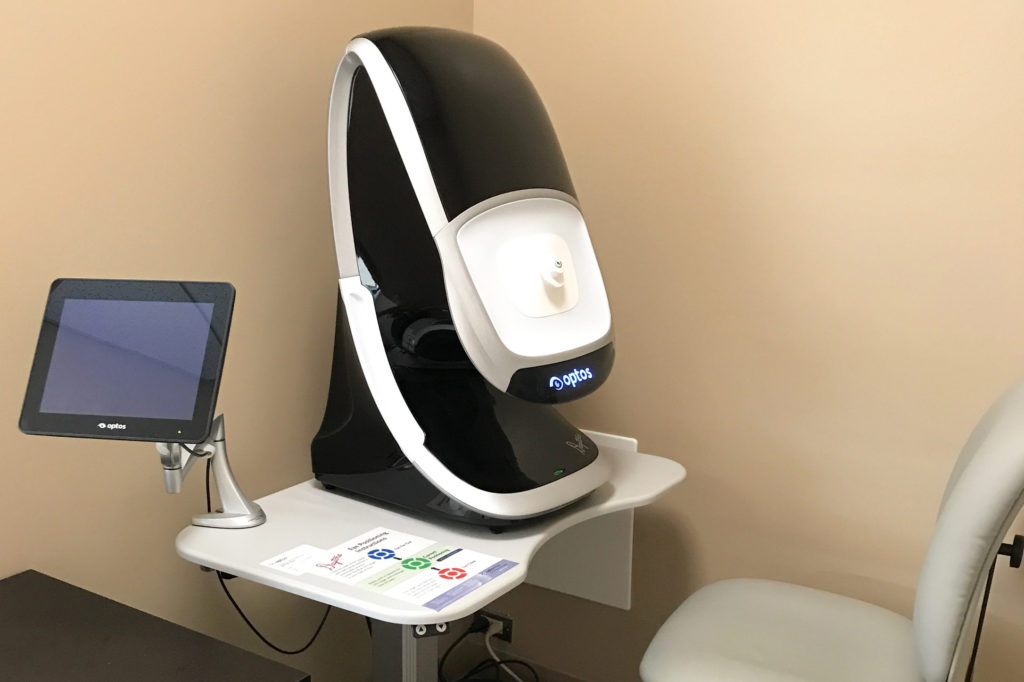
The Optos digital retinal imaging machine in Dr. Anderson’s office. The instrument requires an out-of-pocket fee from patients, but 90 percent think it’s worth it, and have the screening at comprehensive exams.
Optos
What is it and how does it work?
Optos provides digital retinal imaging, allowing a better examination of the patient’s peripheral retina, which other instruments may not be able to provide as easily.
How was it acquired?
We purchased the Optos Optomap in November 2015. We used a three-year loan to cover the costs, which we are still paying off.
Cost
The approximate cost, including all the ancillary equipment and monthly service agreements, was around $90,000.
Which patients is it for?
We use this as a screening tool for every comprehensive eye exam, and nearly 90 percent of our patients take advantage of this. We also use the instrument to further document retinal eye disease such as diabetic retinopathy or a choroidal nevus.
How do you get paid for using it?
We use our Optos as a diagnostic tool, and use the billing code 92550-50, which means “reduced service,” billed directly to the patient, with no need of an interpretation and report.
ROI
Like an OCT, there was a break-even number of patients that was needed to justify the purchase, however, with a 90 percent capture rate, and seeing on average 600 exams a month, we far exceeded the ROI needed for the purchase. Like the OCT, we viewed the Optos as a purchase with ROI based on both enhanced revenues and the instrument’s capability to improve patient care.
For those patients with no systemic issues, and “need a contact lens Rx refill,” we are able to see much more of the retina and have less of a concern regarding that patient’s full eye health with our Optos.
= Charge $20 per screening photos, and bill for medically necessary photos, for which we are paid approximately $54. As much as $15,000 per month.
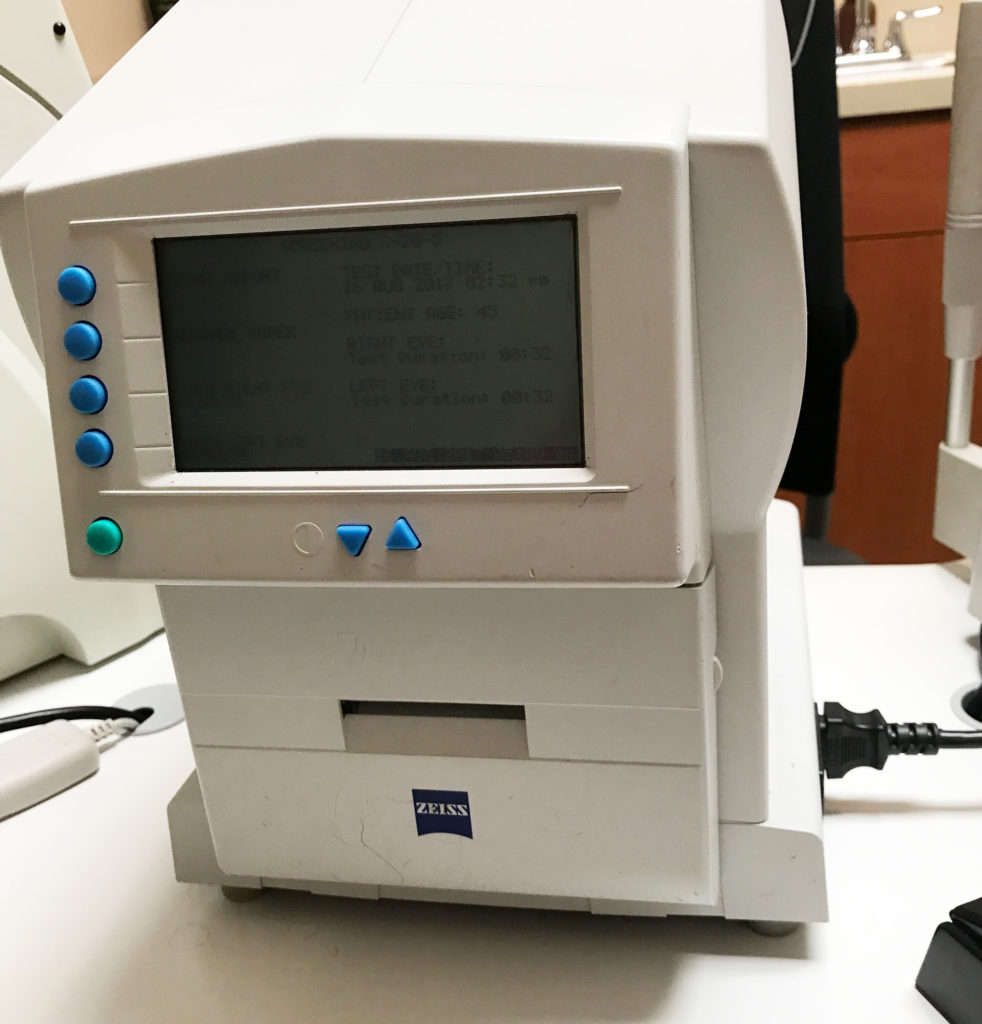
The FDT visual field screening device in Dr. Anderson’s office. The technology gives the practice greater ability to diagnose and monitor glaucoma patients.
Frequency Doubling Technology (FDT) Screening Visual Field
What is it and how does it work?
As defined by the American Academy of Ophthalmology’s EyeWiki, “Frequency doubling technology (FDT) perimetry is based on a flicker illusion created by counter-phase flickering of a low spatial frequency sinusoidal grating at a high temporal frequency. This phenomenon then creates an image that appears double its actual spatial frequency.” The technology then allows the doctor to detect loss in the patient’s visual field from diseases such as glaucoma.
How was it acquired?
We purchased one in 2010 and a second one in 2013. Both were purchased with a line of credit.
Cost
Just over $5,000 for each.
Which patients is it for?
We use this on every comprehensive eye exam.
How do you get paid for using it?
Since comprehensive eye exams include a screening visual field, this is included in our exam fee. In the past, we used confrontation visual fields, and while they can be helpful for some patients, the ability to pick up any actual field deficit for a glaucoma patient is terrible. We looked at the test from two perspectives:
1. The standard of care we provide should be better than other offices in our area.
2. If we wanted to be focused on medical eye disease management, we needed a better way to find the true glaucoma suspects, or other patients with eye disease leading to field loss.
ROI
After purchasing the FDT unit, we looked at the number of threshold visual field tests both before and after, and we quickly noticed an increase in the number of patients who we watched more closely than we would have otherwise. Interestingly, we had a small decline in full glaucoma work-ups for some groups of patients, such as those who simply had large C/D ratios or mildly elevated IOPs, but we had an overall increase in testing, leading to a larger number of glaucoma diagnoses as we were better able to diagnose the disease at an earlier stage on the suspects who had less obvious signs. The biggest advantage was consistent with the other two purchases: the FDT screening visual field allowed our office to become more advanced in the eyes of our patients, and more advanced than the other ODs in our area.
=400 patients currently diagnosed with glaucoma, and another 800 who are suspects with various degrees of risk. Of these, over 25 percent also have diabetes. That can add up to hundreds of thousands of dollars in care we can deliver.
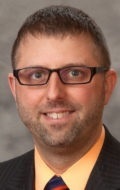 Dave Anderson, OD, is a partner with Miamisburg Vision Care in Miamisburg, Ohio. To contact: doca@burgvision.com
Dave Anderson, OD, is a partner with Miamisburg Vision Care in Miamisburg, Ohio. To contact: doca@burgvision.com



